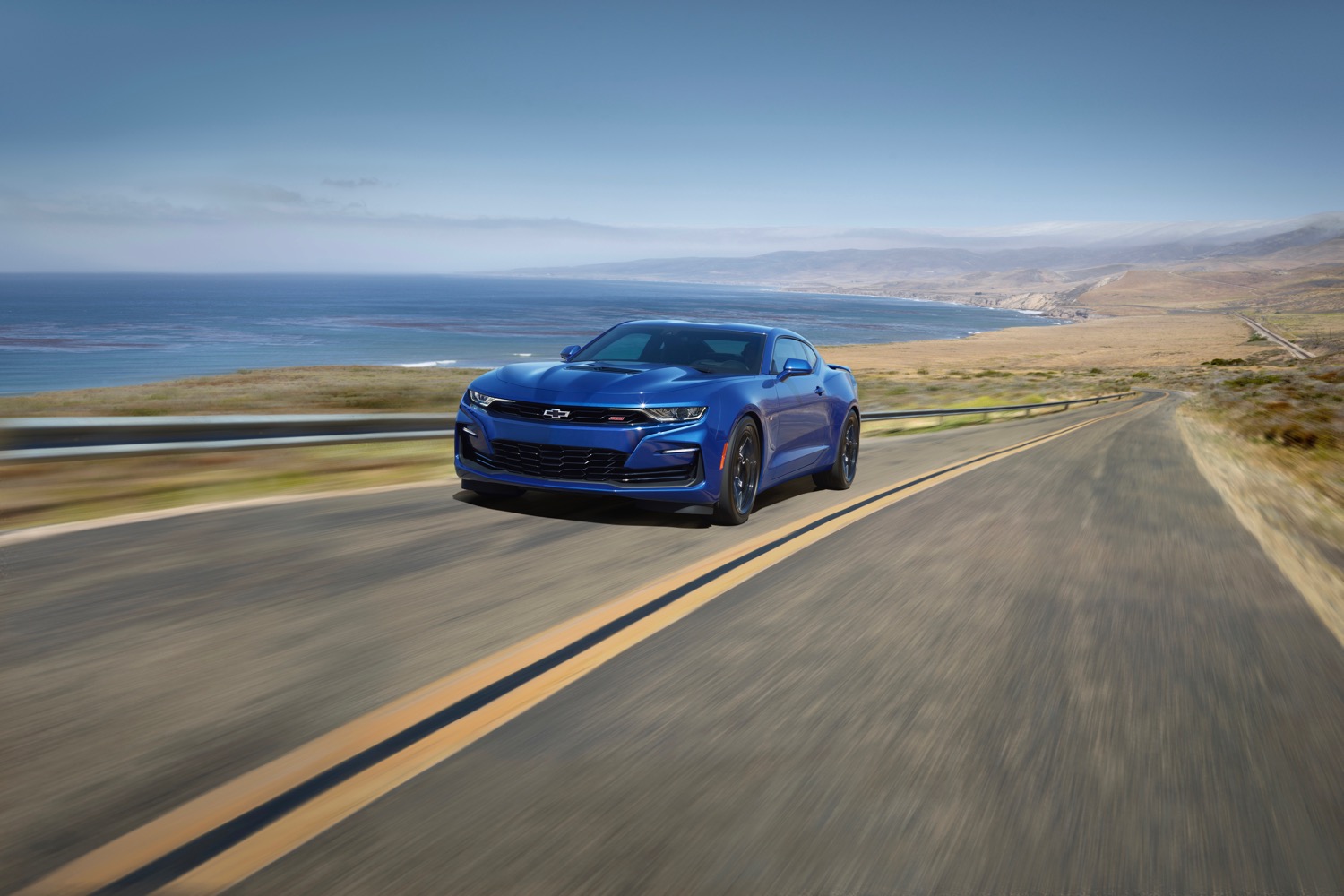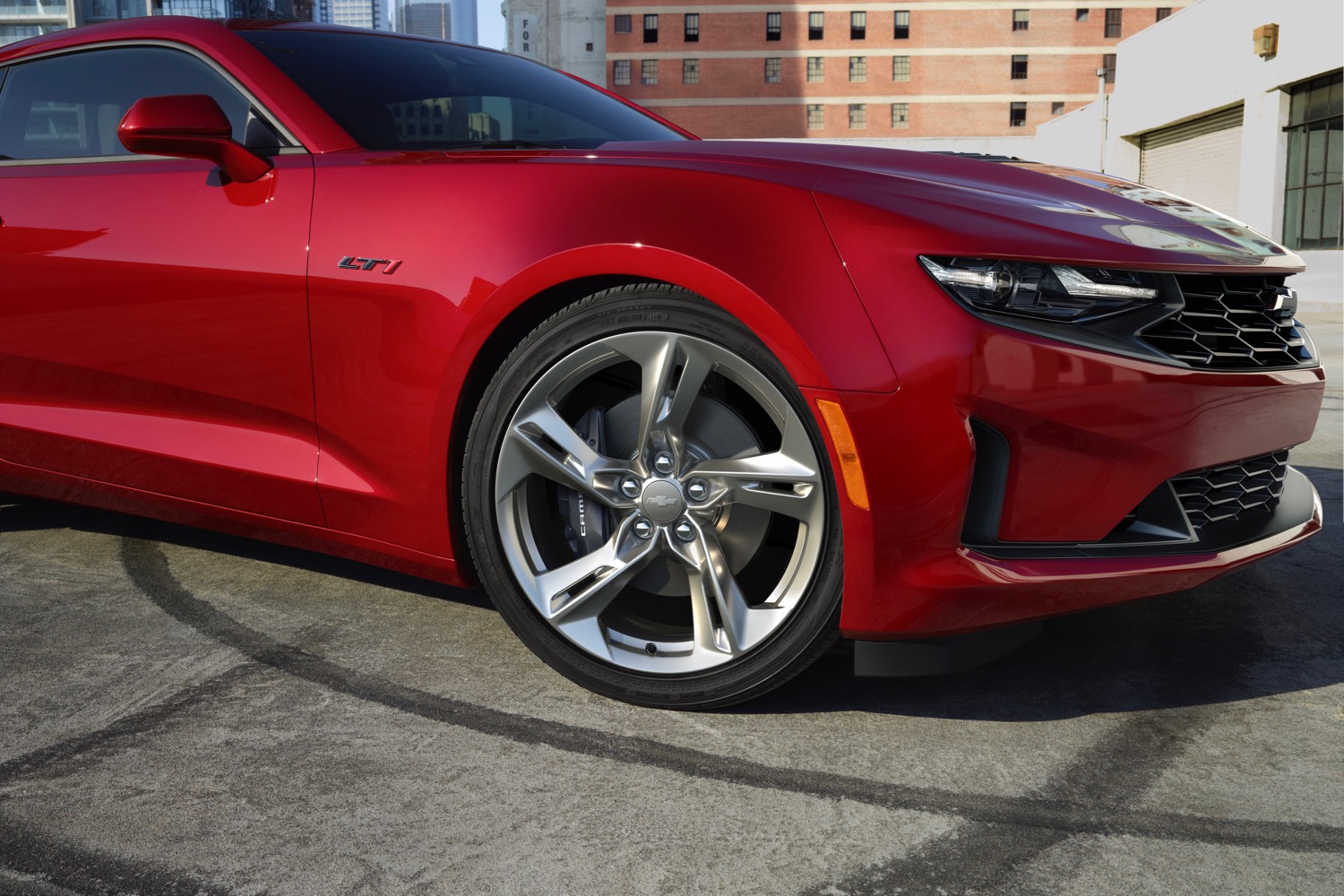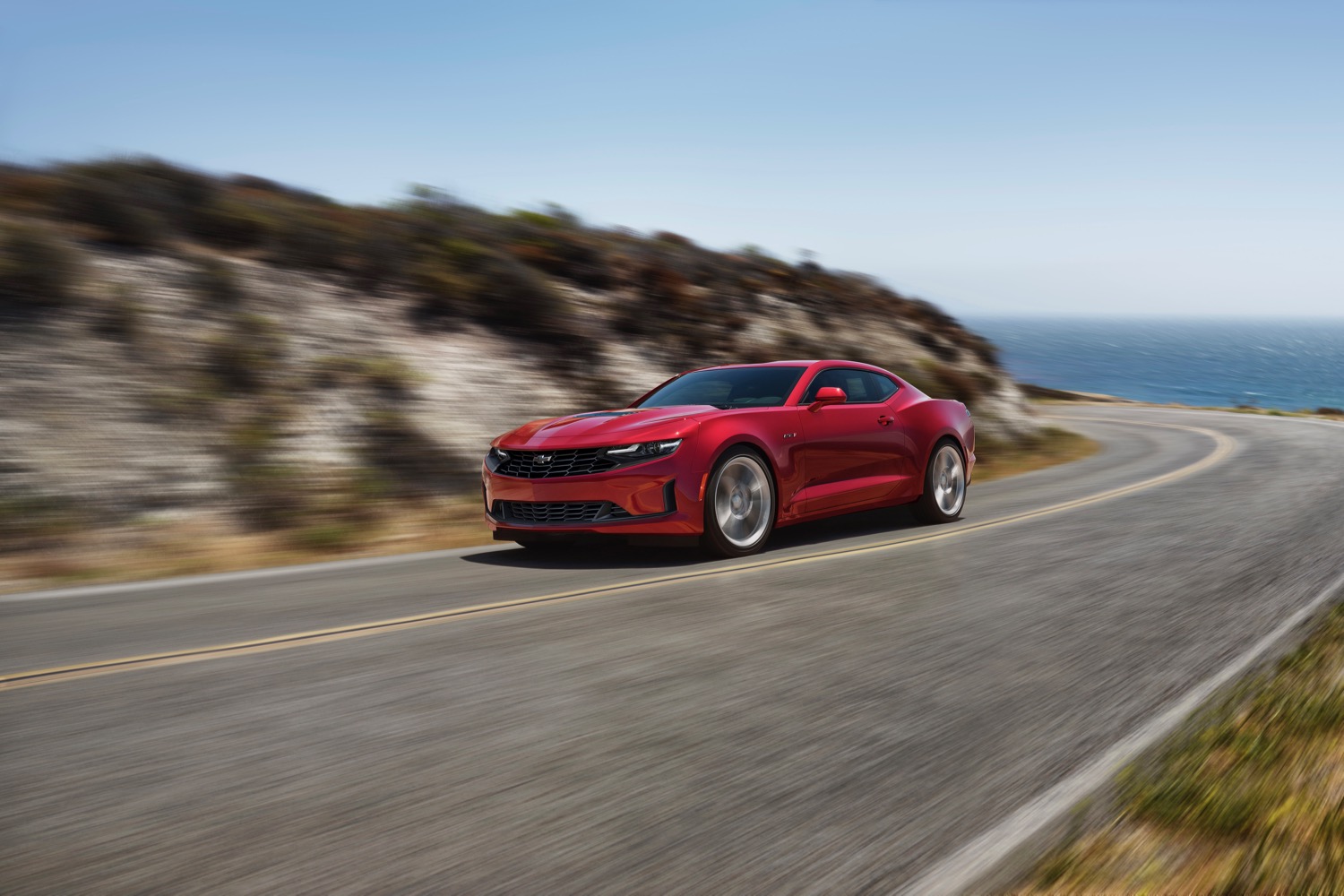The Chevrolet Camaro received some styling tweaks for the 2019 model year, and they didn’t go over well. Credit to Chevy’s designers for being quick on their feet, though, because the 2020 Camaro SS model gets some cosmetic surgery. Chevy is also adding a new LT1 trim level that gives customers access to V8 power at a lower price point.
Styling changes for the 2020 Camaro SS include a repositioned Chevy bow-tie emblem and a body-color bar between the upper and lower grilles, replacing the previous blacked-out piece. The new look is based on the Camaro Shock show car that debuted at SEMA 2018, which Chevy said garnered good reviews from customers. That helped the automaker put a more positive spin on the decision to change the car’s styling after just one model year.
“Customers spoke, and we listened,” Steve Majoros, Chevy director of passenger car and crossover marketing, said in a statement. “The overwhelmingly positive reaction to the Shock’s stylized design helped prompt its transition from concept to production.”
The 2020 Chevrolet Camaro also gets a new LT1 trim level, boasting the 6.2-liter V8 previously available only in the Camaro SS. At $34,995, the LT1 is $3,000 cheaper than the least-expensive V8 2019 Camaro trim level, the 1SS, which starts at $37,995. It also comes in below the cheapest V8 Ford Mustang, the $36,450 GT. The LT1 is basically a lower-level Camaro 1LT model with the V8 engine, so it sacrifices some creature comforts to achieve that lower price point. It does get the Camaro SS’ vented hood, as well as 20-inch wheels, though. An 8-inch infotainment system and Bose audio system are part of an optional technology package.
One more notable piece of 2020 Camaro news is the addition of a 10-speed automatic transmission for 3.6-liter V6 models, which previously made do with an eight-speed automatic. The 10-speed is already available with the V8 engine, while the 2.0-liter turbocharged four-cylinder engine still gets the eight-speed gearbox. A six-speed manual transmission is also available with all three engines.
Chevy hasn’t announced pricing for the full 2020 Camaro lineup. That will likely happen closer to the start of sales this fall. General Motors is discontinuing many passenger cars in an effort to cut costs, but so far the Camaro does not appear to be affected.





